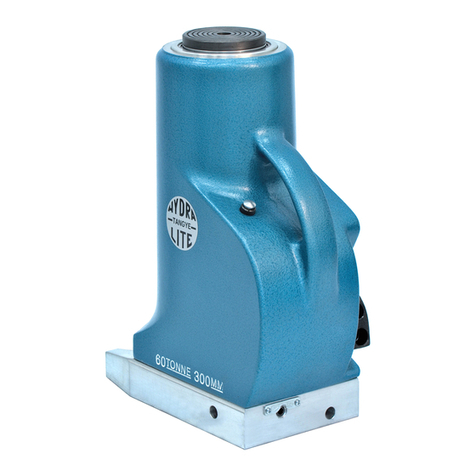©Allspeeds Ltd
Suction Connections
The suction connection in the pump body is a 3/8" B.S.P.
threaded hole with a flat-bottomed seat. This provides
for a sealing washer either at the bottom of the hole or
under a stud coupling on the outside face.
Delivery connections
There are two delivery connections positions, one on
the front face and the other on the top _face of the
pump. Either one may be used but not both together. A
delivery valve stopper is screwed into that connection
not in use and as this locates the delivery valve cage in
either position, it must always be fitted and on no
account must a pressure gauge or any other connector
be screwed in direct as an alternative.
The standard fitting for the gauge is direct to the pump,
the back of the gauge lying flush with the top of the
pump body. A banjo and bolt is supplied when mounting
in this manner and must be specially ordered. The
delivery connections are tapped 1/ " B.S.P. and are
suitable for a stud coupling or hose with an external face
joint.
Testing the Pump
When your pump is set up for operation, remove all
trapped air and systematically check as follows:
ALWAYS ENSURE:-
1. That a full effective stroke is possible on low pressure
when the pump is operated at a reasonable speed and
that 5 bar can be developed and held.
. That a full effective stroke is possible on high pressure
when the pump is operated at a reasonable speed and
that the full rated pressure of the pump can be
developed and held.
3. That after several strokes either on high or low
pressure no air is picked up to cause a loss of effective
stroke*. Check that it is not possible to raise high
pressure when on low pressure position.
*A small amount of free movement of the handle is
associated with clearance of the working parts, and
should not be confused with loss of effective stroke due
to other causes.
4. That there is no external leakage of fluid from any
part of the pump.
5. That the fluid is returned back to the system in
reasonable time when the release valve is opened.
6. That the 'Push" "Pull" pressure selection button has a
positive location in either position and that it cannot be
caused to jump out to the low pressure position when
operating the pump rapidly on high pressure.
Trapped Air in the Pump
Air in the pump will cause loss of effective pumping
stroke and will also permit high pressure to be raised
even when the pressure selection button is in the low-
pressure position. It is, therefore, essential to exclude all
air to obtain the best performance. If, after having
vented the system, the pump continues to collect air, a
systematic check should be made on all the seals of the
suction side of the pump to ensure that they are not
defective or loose.
Possible sources of air leakage into the pump are as
follows:-
1. At the suction connection
. Release valve cage joint washer.
3. Release valve stem seal.
4. Suction Filter Joint Washer.
5. Pressure Selection Button Seal.
Should there be a positive suction head on the pump
and if the above items are defective, they will become
sources of external leakage.
Pressure Relief Valve
A pressure relief can be fitted direct into the pump body
and can be set to any desired pressure within the rating
of the pump. Full details on request.
Other Liquids
Although primarily designed for use with oil or water
other liquids can be used in the pump. In certain
circumstances they require special seals. Full details on
request.
IMPORTANT SAFET WARNING
Always check operating pressure of equipment when
using pump. High pressure pump rating stamped on
pump plate.
The connecting hose from pump to equipment should
be of adequate pressure rating, be correctly fitted, and
in good condition. In circumstances where a hose would
be subject to undue flexing, sharp bends, or mechanical
damage; we recommend the fitting of steel piping.
We recommend that any servicing of equipment is
carried out by Tangye Approved Service Agents. Details
of Approved Service Agents on application to Tangye.
FAULT DIAGNOSIS
1. No delivery.
. Pump handle when operated does not operate
plunger.
3. Loss of full delivery.
4. Pump will not change from low to high
pressure.
POSSIBLE FAULT
1. Cistern empty.
. Link plates broken.
3. Air in system.
4. Dirt in system. Remove filter and flush pump.
Tangye – A division of Allspeeds
Royal Works, Atlas Street
Clayton-Le-Moors, Accrington, Lancashire. BB5 5LW, UK
Tel: +44 (0) 1 54 615 100 Fax: +44 (0) 1 54 615 199
Email: info@allspeeds.co.uk
Website: www.allspeeds.co.uk




















